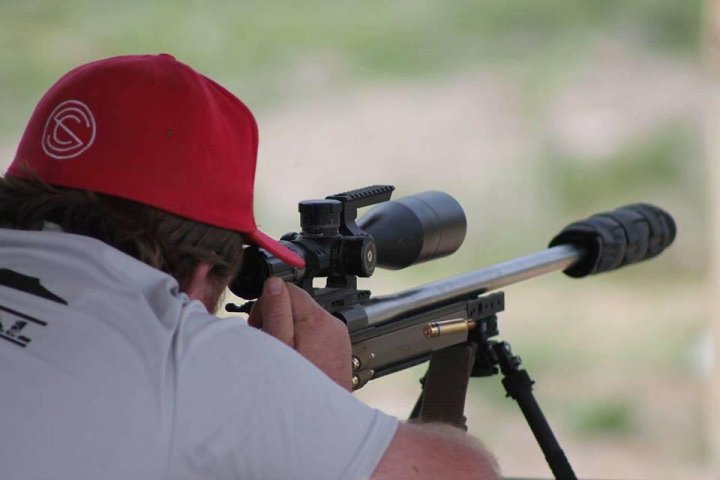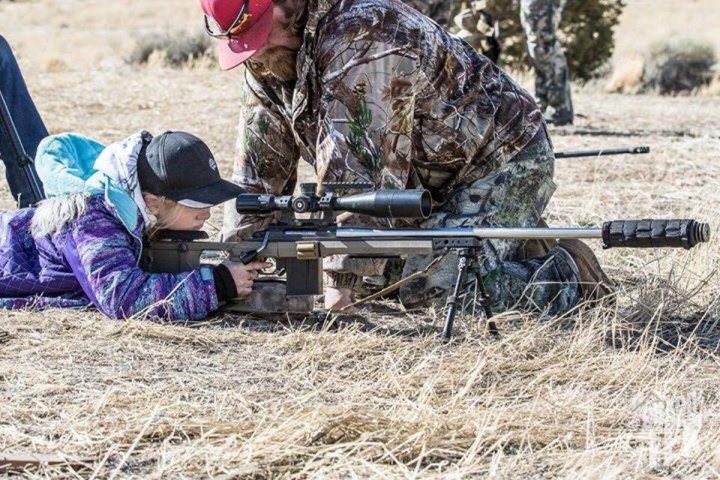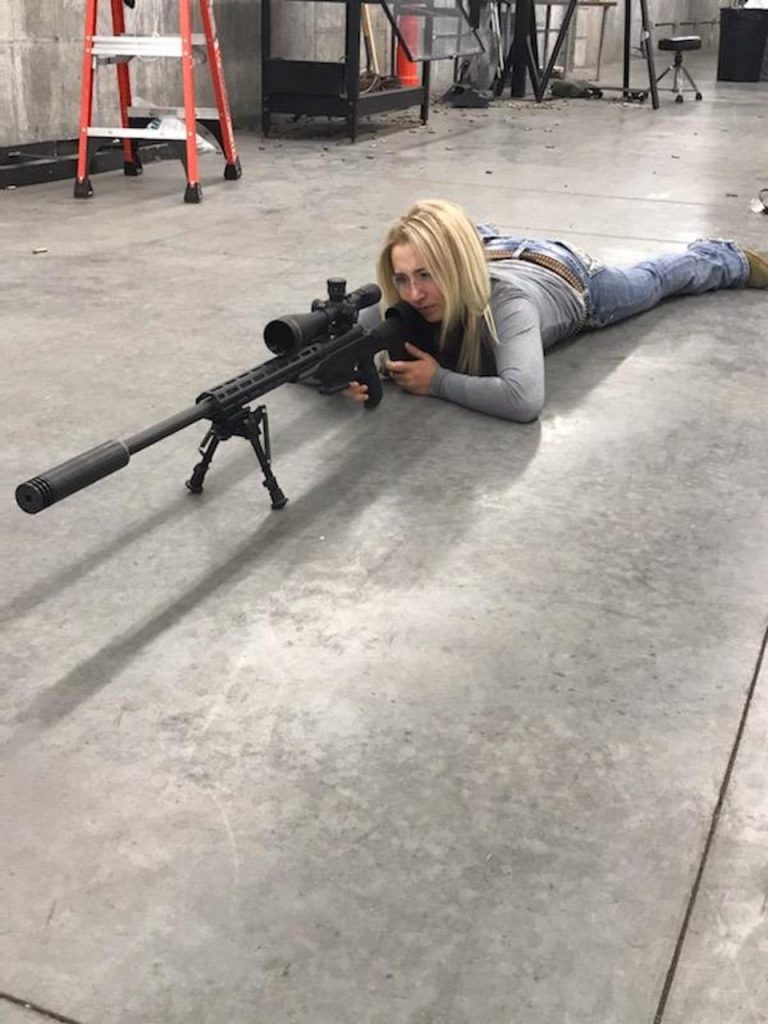“Impact!” is my goal at 1 mile back-to-back for 5 shots, shooting a long range rifle. I’ve got a long way to go and a short time to get there, and it’s only the beginning. I sat down with the guy, Curtis Broadbent, that got me into long range shooting to pick his brain about his history in this sport and tips and tricks for reaching my goals a little faster.
Sponsored by SilencerCo
Shalice Parker: How did you get into long range shooting?
Curtis Broadbent: There’s a shooting forum called ‘Snipers Hide’; I was just kind of following it, reading topics, people ask questions. You learn stuff on there. There were sections for local matches, shooting competitions and I came across one that was for 22 long rifle, and it was down in Provo Shooting Range in Provo Canyon. I had a Marlin Papoose with a crappy scope and thought, ‘I’m going to go to that.’ I had no idea what I was getting myself into. I didn’t understand how to dial a scope, I didn’t even have mil dots. I grew up shooting rabbits, birds, just plinking you know. So I went to this competition and got 4th place just doing hold-overs. It was awesome, so I started looking for more competitions. I wanted to get into more long-range competitions, so I ended up buying a .308 a few months later and started doing more matches.

Shalice Parker: What was the most difficult thing for you to learn when you got started?
Curtis Broadbent : Probably wind … OK, there are 2 things that are difficult, and one of them you learn pretty quickly; it’s a novice thing and I see people do it still is trusting where your bullet goes.
I think when I first started shooting long range, it was trusting that I pulled a good shot and trusting where the bullet went to make a full correction based on what the bullet told me.

Shalice Parker: What was your longest shot?
Curtis Broadbent: 3,810 yards. Furthest first round impact was 2,016 yards. Something that taught me the most about first round impacts – it’s called Cold Bore Challenge. On a hunting forum, the question was asked, ‘Cold bore first round on an animal, how far are you comfortable to take the shot?’ I started thinking about it and really, it’s subjective to the conditions, caliber, etc. I went out on 20 different days and I took into consideration the conditions – specifically wind – and I recorded them all. There were times I was only comfortable out to 400 yards. I think my longest shot during that challenge may have been 1,100 to 1,150 yards. There were days that I’d miss. The goal was to get first round impact. If I was in a hunting situation and these were the conditions, and there was an animal at 800 yards … but I’m only comfortable at 600 yards … at that point, I can’t take the shot. Cold bore challenge taught me a lot.
Shalice Parker: What’s the most important thing you could teach someone about long range shooting?
Curtis Broadbent: I think the most important thing about shooting, and this will translate to any aspect of shooting, is natural point of aim. Natural point of aim is if you close your eyes and get into position, where is that gun pointed. The way I teach natural point of aim is if you’re going to pull this gun up and get into a position where you feel like you’re holding the gun stable, when I open my eyes – is my gun on target, or do I have to twist my body, or muscle the bag if I’m shooting prone, to move the gun onto the target? You want to make a repeatable shot. Natural point of aim is easily repeatable.

Shalice Parker: Do you have any tips or tricks for long range shooting?
Curtis Broadbent:
One of the first things I learned when I started shooting long range was getting square behind the gun. This especially makes a difference for me because I have such a small frame. This allows my whole body to absorb the recoil instead of my shoulder taking the hit. Along with getting square behind the gun, having a solid cheek weld as well as proper eye relief with the optic affects how well you track your trigger pull, recoil and impact of the bullet after you’ve taken your shot. I understood this concept better once I started dry fire practicing. I could tell when I was jerking the trigger, if I was pushing or pulling the rifle while I was getting into position, and could start to tell whether or not I was going to hit or miss based off my dry fire trigger pull.
Shalice Parker: I’d say the biggest takeaway is that the little things that make the biggest difference.
Want to learn more about long range shooting? Check out some of Shalice’s previous posts:
Try Something New: Why Women Should Shoot Precision Rifles
Long Range Shooting – What You Need to Get Started
During her time as the compliance coordinator, Shalice Parker has rekindled a lost love for shooting, something her grandfather had been teaching her before his passing as well. Shalice is now learning many disciplines of the shooting sports – including shotguns, pistols, or rifles. She is determined to experience it all and to share her experiences with women everywhere. Please join her on her journey to master precision rifle shooting.
The Women's Outdoor News, aka The WON, features news, reviews and stories about women who are shooting, hunting, fishing and actively engaging in outdoor adventure. This publication is for women, by women. View all posts by The WON